Email is still one of the most common methods of online interaction, and it doesn’t look like that’s going to change anytime in the near future. As a result, your website needs to be able to send messages without fail. Unfortunately, there are a lot of different facets to how email is sent from a website.
Not all WordPress servers are built the same. In fact, some settings may prevent messages from being sent because of the underlying technology. For instance, some users will have problems with the default PHP email system built into the content management system.
There are several ways to fix WordPress email when it’s not working. One of the most common is using a third-party system to manage the messages.
In this tutorial, I’m going to show you how to use SendGrid for WordPress. It’s one of many email services available that helps businesses and individuals alike get their messages sent without complications.
Why Does WordPress Use Email?
WordPress uses email for a wide range of purposes. Notifications, update information, password resetting, and comment notifications are just some of the reasons a website needs messaging ability.
If you plan on running an eCommerce store, email is imperative. Not only will your visitors appreciate being notified when a purchase has been shipped, but messaging is also a large part of marketing strategies. After all, you want your customers to know when certain items are on sale.
WordPress uses a PHP-based system to send messages by default. Although this platform works well for some people, it doesn’t always have the greatest support. In reality, a lot of spam filters trap PHP email both on the sending and receiving end. If this happens to you, that’s when you need an email service.
What, Exactly, Is the SendGrid Service?
SendGrid is a system that acts as a middle-man to make sure your messages are sent correctly. The company uses its own servers to relay your content, which surpasses a lot of problems PHP may have such as spam filtering.
For those who need email marketing services, SendGrid handles that as well. While it’s not as elaborate as some of the other email systems you can use on the Internet, its pricing scheme is comparative to alternatives.
Unfortunately, SendGrid no longer supports the free 12,000 email per month plan. All that is available currently is a free 30-day trial of the system and then a monthly subscription fee thereafter.
Using SendGrid WordPress Email Notifications
The first thing you’ll need is a SendGrid account.
Go to the SendGrid website. Register by clicking the “Try for Free” button.

After you finish setting up your account, go back to your WordPress admin dashboard. Install and activate the SendGrid plugin.
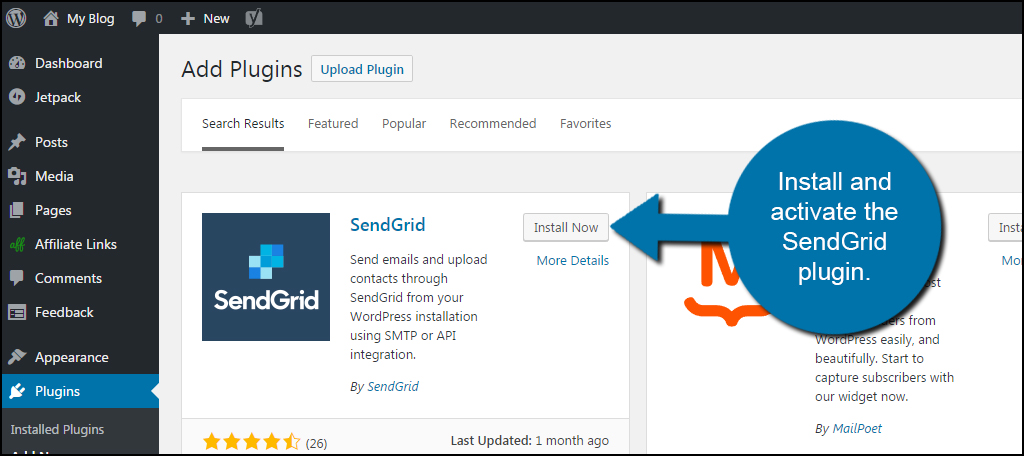
Go to the Settings area of WordPress and Click “SendGrid.”
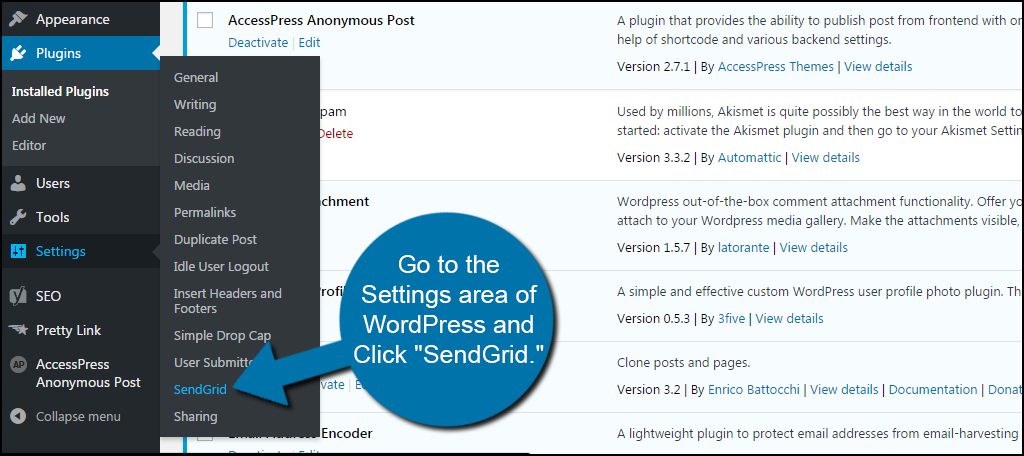
In the settings screen, you’ll see a place to input your API key. This is generated in your SendGrid profile under API Keys in the Settings section. Create a new key and put it into this box.
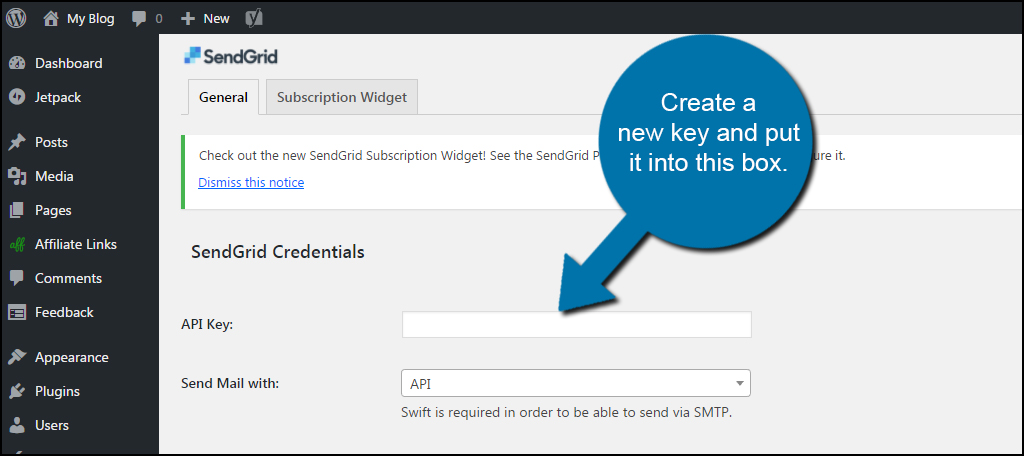
Fill in your mail settings for the account. You’ll need elements such as a name, what address the email is coming from, reply address, any templates you want to use and other pertinent information. This is data your recipients will see.
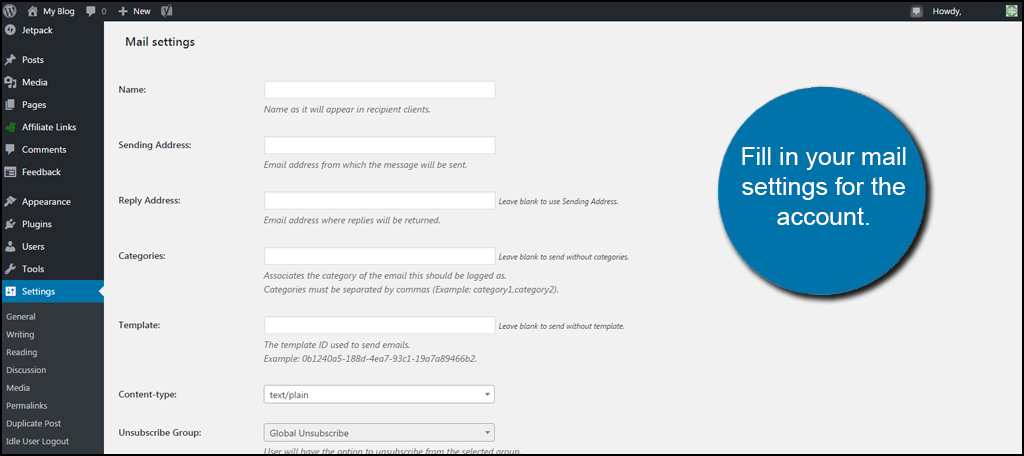
Click the “Update Settings” button when you’re done.
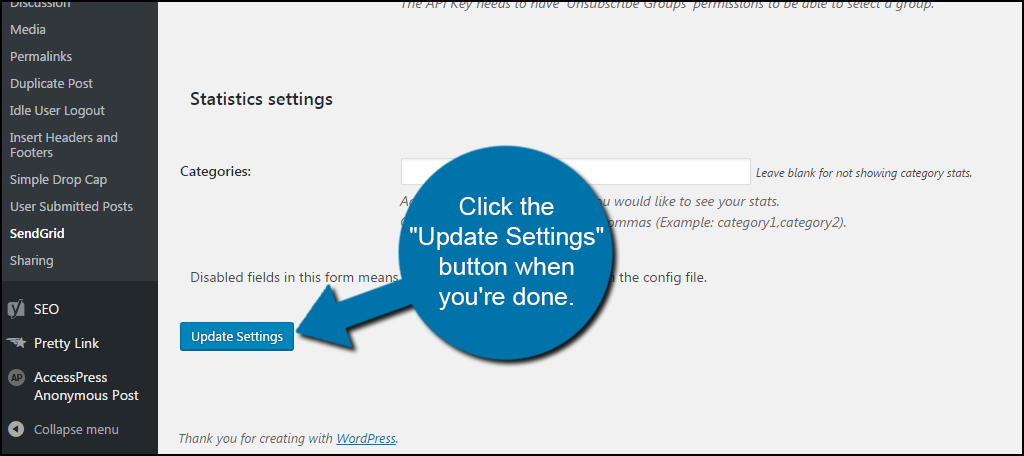
That’s all there is to it. Now, SendGrid will command all of your website’s email. Anything WordPress needs to send out from the site will be routed through SendGrid for security and functionality.
Communication is Vital
Sending messages from the website itself is a vital part of keeping it functional and efficient. WordPress relies on the ability to access and send email for many of its features. You want to make sure recipients are getting the messages they need whether it’s to reset a password or being notified a new comment is available on a post. You don’t want a website to fail simply because WordPress is not sending email.
What kind of third-party systems do you find to be the best value? How often do you communicate with others who visit your website?
